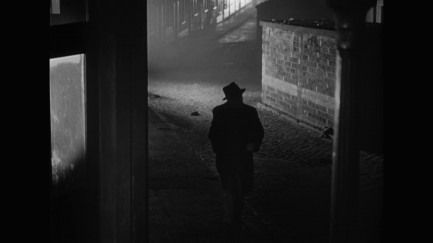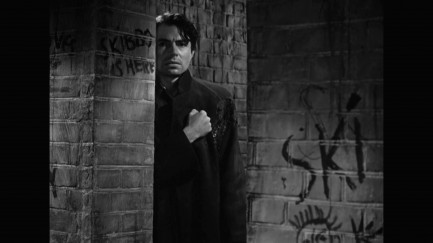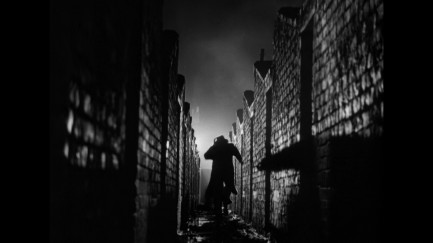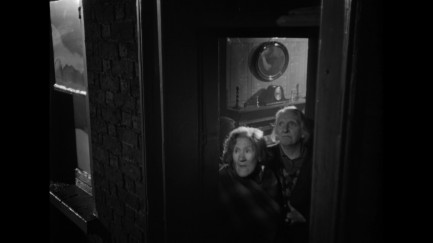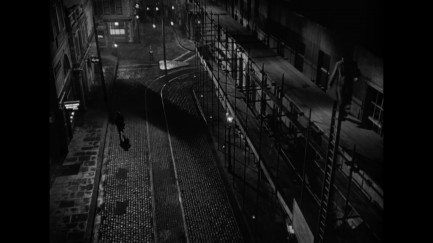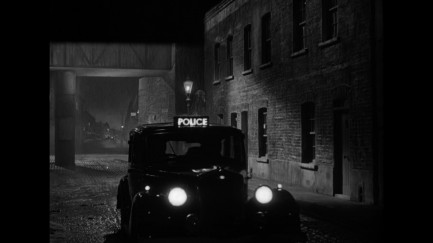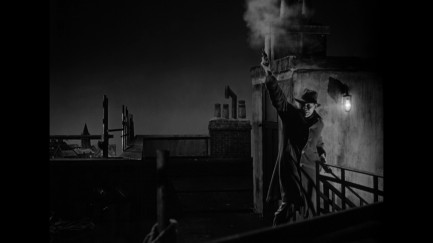 Film noir with an Irish accent. 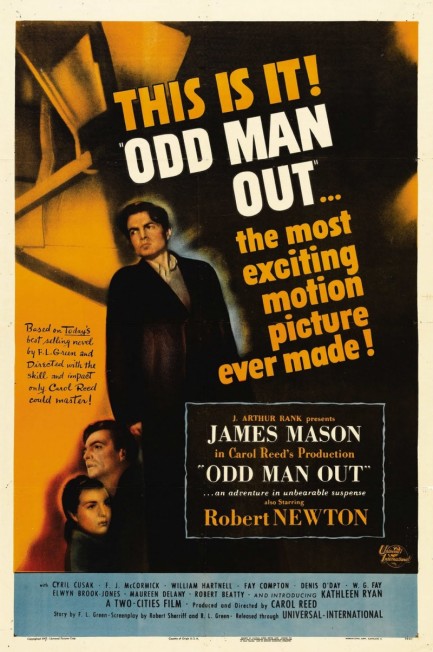
Odd Man Out, for which you see the promo poster above, is a beautifully shot thriller about a group of Irish political separatists who rob a mill in order to help finance their organization. The group is obviously based on the Irish Republican Army, whose actions helped fuel the Troubles—that period of violence that engulfed Ireland mainly during the 1960s The film takes no sides, at least not overtly, while presenting the separatists as fully realized, complex human beings. Needless to say, a movie of this depth and thoughtfulness would never be made today on the subject of terrorists. James Mason is the titular odd man out, the leader of the gang who's left behind after the robbery and must somehow survive alone, wounded and sick, as the police close in. The bad luck, deceptions and palpable sense of doom are standard for film noir, but what isn't is the location work in the backstreets of Belfast. The screen grabs below are all from around the forty minute mark, and their deep shadows, angular light, and inky blacks show how much planning and effort director Carol Reed and cinematographer Robert Krasker put into making the film visually perfect. We doubt it's the most exciting motion picture ever made, as claimed on the poster, but we recommend it. Odd Man Out premiered in the UK in January 1947 and opened in the U.S. today the same year.
 The Third Man is a stiff drink, with a twist of Lime. 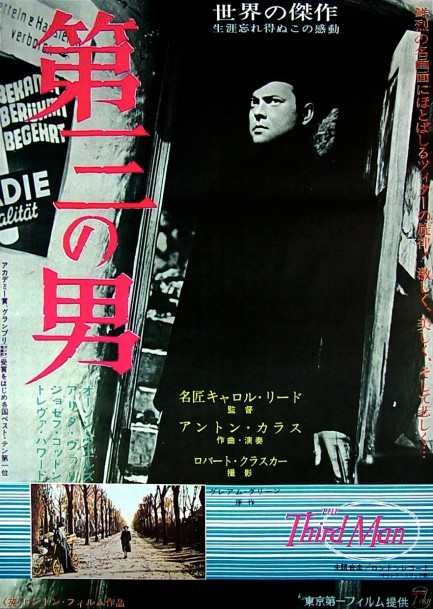 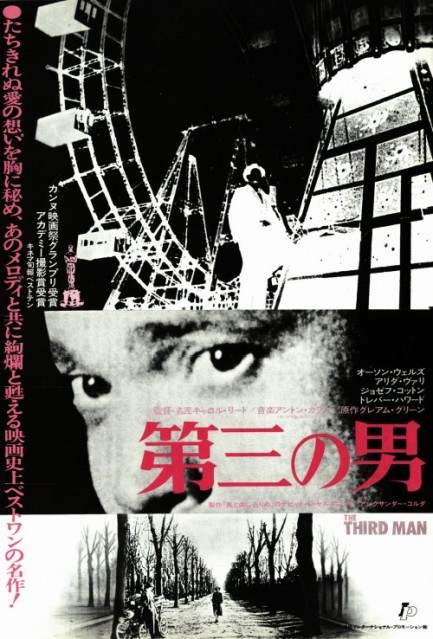
The 1949 film noir The Third Man is a best-case-scenario of what can happen when great talents collaborate. Carol Reed directs, Orson Welles, Alida Valli and Joseph Cotten act from a screenplay penned by master storyteller Graham Greene, and the cinematographer is Robert Krasker. Krasker won an Academy Award for his work here, and when you see the velvety blacks and knifing shadows of his nighttime set-ups, as well as the famed scenes shot in the cavernous Vienna sewers and bombed out quadrants of the city center, you’ll understand why. The story involves a pulp writer named Holly Martins who arrives in a partitioned post-war Vienna only to find that his friend Harry Lime is dead, run down by a truck. When Martins learns that the police are disinterested in the circumstances of Lime’s demise, he decides to do what one of his pulp characters would do—take matters into his own hands. But nothing adds up. He learns that Lime died instantly, or survived long enough to utter a few last words. He finds that Lime was a racketeer, or possibly not. And he discovers that two men were present when Lime died—or possibly three. That third man seems to be the key to the mystery, but he proves to be damnably elusive. We can’t recommend this film highly enough. Above you see a pair of rare Japanese posters from The Third Man’s premiere in Tokyo today in 1952.
|
 |

The headlines that mattered yesteryear.
1933—The Gestapo Is Formed
The Geheime Staatspolizei, aka Gestapo, the official secret police force of Nazi Germany, is established. It begins under the administration of SS leader Heinrich Himmler in his position as Chief of German Police, but by 1939 is administered by the Reichssicherheitshauptamt, or Reich Main Security Office, and is a feared entity in every corner of Germany and beyond. 1937—Guernica Is Bombed
In Spain during the Spanish Civil War, the Basque town of Guernica is bombed by the German Luftwaffe, resulting in widespread destruction and casualties. The Basque government reports 1,654 people killed, while later research suggests far fewer deaths, but regardless, Guernica is viewed as an example of terror bombing and other countries learn that Nazi Germany is committed to that tactic. The bombing also becomes inspiration for Pablo Picasso, resulting in a protest painting that is not only his most famous work, but one the most important pieces of art ever produced. 1939—Batman Debuts
In Detective Comics #27, DC Comics publishes its second major superhero, Batman, who becomes one of the most popular comic book characters of all time, and then a popular camp television series starring Adam West, and lastly a multi-million dollar movie franchise starring Michael Keaton, then George Clooney, and finally Christian Bale. 1953—Crick and Watson Publish DNA Results
British scientists James D Watson and Francis Crick publish an article detailing their discovery of the existence and structure of deoxyribonucleic acid, or DNA, in Nature magazine. Their findings answer one of the oldest and most fundamental questions of biology, that of how living things reproduce themselves. 1967—First Space Program Casualty Occurs
Soviet cosmonaut Vladimir Komarov dies in Soyuz 1 when, during re-entry into Earth's atmosphere after more than ten successful orbits, the capsule's main parachute fails to deploy properly, and the backup chute becomes entangled in the first. The capsule's descent is slowed, but it still hits the ground at about 90 mph, at which point it bursts into flames. Komarov is the first human to die during a space mission.
|

|
|

It's easy. We have an uploader that makes it a snap. Use it to submit your art, text, header, and subhead. Your post can be funny, serious, or anything in between, as long as it's vintage pulp. You'll get a byline and experience the fleeting pride of free authorship. We'll edit your post for typos, but the rest is up to you. Click here to give us your best shot.

|
|


